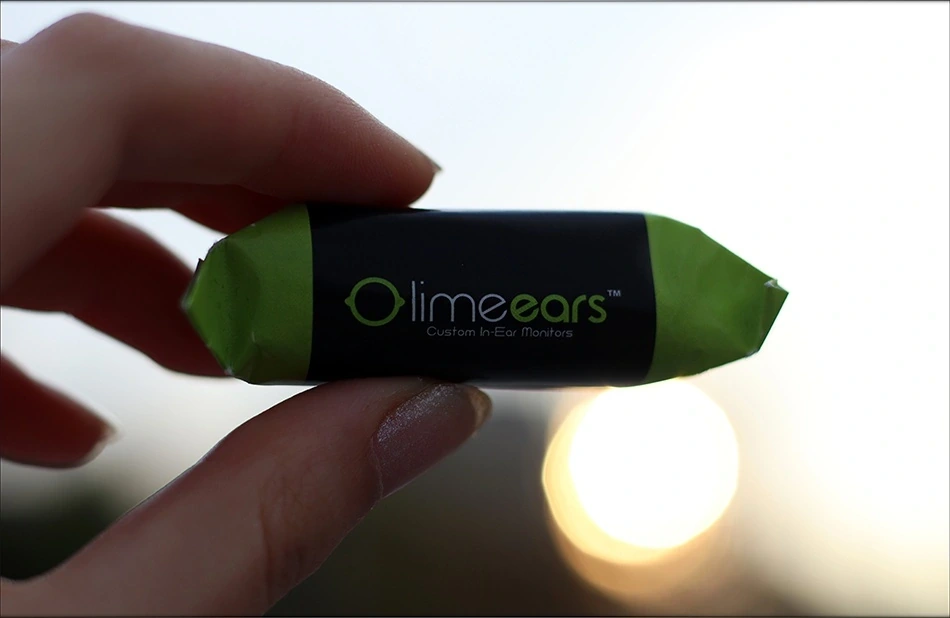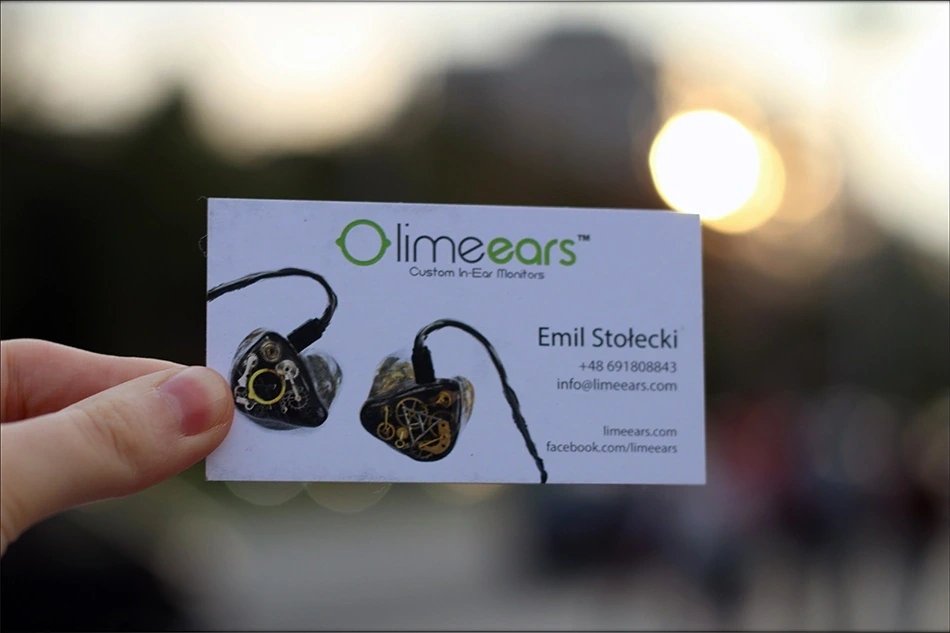Lime Ears Aether R IEMs – Double Faced Trickster
Lime Ears Aether R is the flagship that took the world by surprise, an IEM made in Poland Europe, costing 1200 Euros, or about 1400 USD. They will get compared to Final Audio A8000, Meze Rai Penta, Clear Tune Monitors Da Vinci X, Lime Ears Model X, and Campfire Atlas. The pairing list includes iBasso DX300, FiiO M11 PRO, and HIFIMAN R2R2000.

Introduction
Lime Ears doesn’t have a name that’s imposing, but their sound really makes you want to listen to what they have to say. They are from Poland, and they’re here to do business with our ears and hearts. The quality of the products is usually really good, they provide excellent support, and their warranty is one of the best there are. Since their IEMs are built by hand, they check on quality multiple times, and can customise your IEMs even if you go for the universal variant.

It should be noted that I have absolutely no affiliation with Lime Ears. I’d like to thank Lime Ears for providing the sample for this review. This review reflects my personal experience with Lime Ears Aether R. Every opinion expressed is mine and I stand by it, the purpose of this review is to help those interested in Lime Ears Aether R find their next music companion.
Product Link
You can always get your Lime Ears Aether R from here: https://limeears.com/aether/
If you’re looking for the Aether R at a reduced price, they appear sometimes on Drop here: https://drop.com/buy/limeears-aether-r-universal-fit-iem
Packaging
First things first, let’s get the packaging out of the way:





The package of the Aether R is SWEET. We get a nice cable (thin looking, but nice), a good selection of tips, including Spinfits, a personalised card, warranty card, and sweets!
This is one of the two companies in the entire world that includes sweets with their IEMs, and given how much I love sugar, this wins them some extra points from me.
There’s that amazing carrying case that weighs a ton too.
Build Quality/Aesthetics/Fit/Comfort
Aether R is an IEM made of Resin, with detachable cables based on the 2-Pin connector. They are entirely made by hand, and they have six balanced armatures, with a four-way crossover. This is one of the most complex setups in this price point, but it doesn’t stop there.
They rely on the VariBore and TrueSub technology, both being aimed at decreasing the overall distortions and increasing the overall clarity, along with the bass response of the IEM.

I also enjoyed having the switch for the bass crossover, as it is a good way to tune the Aether R to be either bassy or bright, covering more sonic ground for more ears.
They are rather easy to drive, but they are also a bit sensitive to hiss. The universal variant is the one I am reviewing, but the custom should sound similar. Lime Ears is one of the very few companies that managed to get in a universal IEM, the sound almost exactly as the one in the custom variant.
The Aether R offers an amazing isolation from the outside noise, and has a bit of void in practice, but that’s to be expected given that they only use BA drivers. They also have a sound that’s made to replicate a listening experience with a three-way monitor, and they have the soundstage as one of their fortes, at least if we take a look at the design.
The comfort is excellent, but they are on the slightly large side, so they’re best if you have medium or large ears. The fit is medium towards deep, which helps with the isolation and provides consistency between users. Shallower fits tend to have much more variation between different users.
Youtube Video
Sound Quality
I have to be a bit more critical when reviewing the Aether R than with most of the IEMs I review, as it is quite pricey and it is pandered to those who care a lot about details. The overall sound can be defined as natural, organic, rich, airy, ultra-detailed, clean, clear, with a good bass, and a clean treble.
The bass has a good overall definition, and the sub-bass is fairly thunderous. There’s a minor down slope of a few dB below 40 Hz, but that doesn’t stop the sub-bass from rocking when it wants to rock. At most, it helps keep an uncolored sound, with good overall punchiness. It is exceedingly clean and well layered, and the texturization is just right. Note decay is quick and this works well with quick metal, aggressive music, and rock. It even helps acoustic music by providing the needed speed for reproducing many instruments qucikly, so orchestral music lovers will be totally in love with Aehter R.

You never think to yourself that you wish there was more detail in the bass, as the detail is excellent, but once you turn on the bass switch, you will notice an entire midbass and even upper bass lift, a truly grand exposition of sound. I actually prefer the sound with the switch turned off, and the best sound can be found with extensive tip rolling. I wouldn’t rush to judge Aether R before I went through foam, spinfit, and even final tips. It is ironic, but with Aether R in particular, I prefer the bass switch turned off, and foam tips. The transition between the bass and the midrange is clean, the upper bass is never muddy, and the mids are full-bodied without being dark.
The midrange has slight dips in both the lower midrange and the upper midrange, creating a bit of a W-Shaped signature for the Aether R. You never really think much about it until you’re faced with the fact that the organic signature is a bit forward in the voices. This is because Aether R has an excellent detail and micro detail, and having everything a bit more forward can totally draw your attention to those details. The sound is a bit smooth, which helps with long hours of listening, and this adds a bit to the warmth and the rich tonality of them.
Despite them starting smooth, they tend to take in some of that speed of BA drivers, and the note decay is on the quciker side. This emphasizes textures, and resolution. I find the tuning to be great for metal and rock, and even for quick EDM, but it can be a bit too fast for Jazz and slower music. It surely helps with detail either way, and makes for a great monitor for music production. I really enjoy the sweeter, more analogue-like tonality of the midrange with female voices, and male voices tend to be more serious and paced. If rythm is important to you, Aether R will be a very important IEM for you.
The upper midrange has a slight dip, and that continues in the lower treble. It is a modest dip, so you never feel like it lacks substance. In fact, the main part that is cut out is the hot and fatiguing part. The treble is smooth, clean, non-aggressive and non-fatiguing, so for those sensitive to treble, it will work like magic. It is tonally-accurate, and pleasing, making one of the sweetest and rich-sounding IEMS out there. Sometimes I wish they had a slightly more pinchy treble with more bite, but you can actually add some via EQ, as Aether R has a few dB of headroom, especially in the treble.

The clarity and detail are good, and overall, I think that Aether R is best enjoyed if listened at either quiet or medium listening levels. They have such a fine way of presenting detail, and the rich, organic sound warms you up and imbues your life with magic. Not necessarily an IEM made to rock out the loudest, it made me want to chill the hardest.
The soundstage is actually really good, with excellent width, even for its price point. Even more expensive flagships, like A8000 or CTM Da Vinci X have a less holographic presentation and trade in some space for focus, but Aether R decided to go all-in. Despite them having a really nice amount of width, they also have a nice depth, and this is all considering that the mids are somewhat forward, so you feel like you’re in the first row at a spectacle.
You can hear what’s sounding closer and farther away from you, and the stereo imaging results in a holographic presentation. But Aether R never sounds distant or lost, it always remains focused in the mids, providing the kind of detail and clarity that works well with Jazz, Rock, Metal and even Pop. I could notice Aether R favoring lateral far sounds and forward sounds a bit more than in-between ones, making a deep background and a central foreground stand out the most. This gives a colorful, vivid presentation, with good focus on each instrument, without them sounding vague. I recall having this issue with HD800S, where I loved the stage to bits, but after a while, I wanted a bit more focus, as I often got lost in the soundscape it created. Aether R won’t have that issue, and will stay wide, holographic, yet nicely focused on voices and sounds that shouldn’t be too wide.
Comparisons
The main competitors for The Aether R are Lime Ear’s own Model X, CTM Da Vinci X, Final Audio A8000, Meze Rai Penta, and Campfire Atlas. All of those are proper flagships and all of them totally worth their money, so they are a good way to quantify whether the Aether R is worth its asking price or not.

Lime Ears Aether R vs CTM Clear Tune Monitors Da Vinci X (1400 USD vs 2500 USD) – Thanks to good engineering from both companies, we’ll focus mostly on the sound. The package is anyways great for both, two nice flagships. CTM Da Vinci X is more focused on details, a pure neutral sound, with excellent micro and macro detailing. There’s far more musicality to be heard from Aehter R, and it has a more romantic presentation, especially in the “warm” setting. Da Vinci X has the edge for detail, but Aether R has more bass in quantity, yet similar in quality. The main place where CTM Da Vinci X wins is in the midrange, where they are more detailed. The treble is also more natural and more detailed for DA Vinci X, but Aether R doesn’t lose when it comes to their treble. That is, if you want a more relaxed presentation, yet with all the detail of a glaship. There’s a bit more headroom on Aether R if you like to EQ.
Lime Ears Aether R vs Final Audio A8000 (1400 USD vs 2000 USD) – We have another well designed IEM, the A8000. Both IEMs are similar in comfort and ergonomics, but I prefer the default cable of A8000, as it feels slightly better than that of Aether R. The overall sound is brighter, more neutral, and more focused on the A8000. This means that Aether R has a larger soundstage, with more focus on musicality, with more body to music, more overall space, and a deeper presentation too. Micro and macro details are presented with more focus on the A8000, but they are really neutral, resulting in a linear bass and a bright, sometimes pinchy treble. Aether R is easier to listen to, especially on the “warm” setting, and they are much easier to combine with source and less picky about what they’re connected to. There’s a bit more headroom on A8000, if you’re an EQ enthusiast.
Lime Ears Aether R vs Campfire Atlas (1400 USD vs 1300 USD) – Atlas is more aggressively V-Shaped compared to Aether R. There’s considerably more headroom on Atlas, but it comes with driver flex too. The cable of Atlas is better, but the package is more impressive on Aether R. I love the sound of both, but they work well for very different music styles. Atlas works well for grand orchestral pieces, prog metal, prog rock, and everything you want grand. IT has a much larger soundstage than Aether R, but the sound is more focused, more impactful in the mids on Aether R. The bass is more in quantity, and the treble is more pinchy on Atlas, but Aether R wins in terms of realism, where the aggressively V-Shaped sound of the Atlas tends to lose some points to the Polish Jewelry.
Lime Ears Aether R vs Lime Ears Model X (1400 USD vs 800 USD) – Comparing the two models from the same creator, I can see where both are coming from, and honestly I would go for Aether R almost always. It is an improvement from the older Model X in every way, and both need extensive tip rolling to sound right. When you do get Model X to sound well, it sings with passion, the midrange is more emotional, and more colorful, vivid than Aether R. The more expensive model has more detail, more micro-detail and a larger presentation with a better soundstage that comes closer to actual speakers in a properly treated room. The comfort is slightly better on Model X, and both have about equal amounts of headroom if you want to EQ either.
Lime Ears Aether R vs Meze Rai Penta (1400 USD vs 1300 USD) – Meze is almost creating a tradition of making good products that need some EQ, and Rai Penta can indeed take some EQ if you want to push their limits. In their basic shape, the Aether R has a better package from the start. The comfort is better on RAI Penta. The overall sound has more impact, a deeper bass, a more controlled bass, with more detail and micro-detail for Aether R. Meze Rai Penta mainly has a much larger soundstage, but it also leaks far more. Aether R sounds more focused, with more revealing abilities, and the treble is more expressed, midrange is more emotional, and everything is more clean on Aether R.
Pairing
The main pairings will be with iBasso DX300, FiiO M11 PRO, and HIFIMAN R2R2000. Aether R is somewhat picky with the source, and it favors greatly sources with more detail and dynamics. It is also sensitive to hiss and a silent sources are great for Aether R.

Lime Ears Aether R + HIFIMAN R2R2000 (1400 USD + 2500 USD) – When you need to go for the ultimate, R2R2000 is a great place to start. IT has a beautiful dynamic sound, a ton of power, and a controlled bass. I enjoy both the detail and the clarity of the pairing, and also the way micro-details come forward and reveal new bits in the music I’ve always known. There’s also a holographic presentation for the pairing, and Aether R loves being paired with a high-end source to unleash their true potential.
Lime Ears Aether R + FiiO M11 PRO (1400 USD + 2500 USD) – M11 PRO is surely a great DAP to power the Aether R from, affordable for a midranger, but good in width and energetic in the top end. If you wanted them to be a bit more sparkly, and have a slightly more peaky top end, where they are typically flat, then M11 PRO should do the trick. We still have an excellent soundstage and resolution, but this time with absolutely incredible dynamics too. There’s a faint hissing in the background but it is many dB quieter than when I listen to my music so it is ok in the end.
Lime Ears Aether R + iBasso DX300 (1400 USD + 1200 USD) – This pairing has been my personal favorite. The level of detail and dynamic is incredible, and if I was to be honest, I actually waited before posting the review of Aether R to include the pairing with DX300. The absolutely best part is how natural yet detailed the midrange is. It is the type of sonic reproduction that can send shivers down your spine and give you goosebumps, with the right music. It isn’t even the most expensive source I tested the Aether R with, but surely it is one of the best sounding ones.
Value and Conclusion
The value of the Aether R is fairly good, for a flagship. It can never be as value-friendly as FiiO FA9, but it is awesome to have flagships with good packages below 1500 USD. Also, this kind of detail and resolution was pretty much impossible from IEMs ten years ago, regardless how much you were willing to pay.
Value is always getting better and things will appear to be able to do more for less. But this is a good moment to remind everyone that we should support small-time companies that make technological breakthroughs, and companies willing to invest in Research & Development rather than marketing and rebranding products.

The package for Aether R has been an example and should be followed by all CIEMs makers, the polish fudges winning them points in my heart. Of course that can’t win them points in my review for real, but including Spinfit tips and that heavy case does.
The construction is excellent, they have good comfort, and a switch-able sound, between a brighter and a warmer sound. They also have excellent wearing and good sonic resolution, paired with good extension both ways. If you’re sensitive to treble, you’ll be happy to know that the treble is less peaky than with most flagships, especially in the high-treble, and that Aether R has an excellent impact in the lows.
Before the end of today’s review, I will add Lime Ears Aether R to Audiophile-Heaven’s Hall Of Fame, without replacing their model X. This is because it is amazing, but in a different, more analogue-way than the original Model X. The overall detail, and precise yet clean presentation of Aether R made me go Wow too many times for it to not have earned a place in the hall of fame.

At the end of today’s review, if you’re looking for Universal IEMs that fit as good as customs, and if you want to get something that you can switch between bright and warm, if you want excellent resolution, detail, clarity, and an easy to drive flagship, Lime Ears Aether R is one of the best ones I can recommend.
Product Link
You can always get your Lime Ears Aether R from here: https://limeears.com/aether/
If you’re looking for the Aether R at a reduced price, they appear sometimes on Drop here: https://drop.com/buy/limeears-aether-r-universal-fit-iem
--- Please remember to stay safe, and always have fun while listening to music!---
- If you have a dime to spare, please donate, and help us! It would make the day brighter for me and my wife-
Full Playlist used for this review
We listened to more songs than those named in this playlist, but those are excellent for identifying a sonic signature. I recommend trying most of the songs from this playlist, especially if you’re searching for new music! The playlists are different for Spotify, Tidal and Youtube, and based on the songs I enjoy and are available on each!
https://www.youtube.com/playlist?list=PL_cjBXGmwSHSdGcwuc_bKbBDGHL4QvYBu
https://open.spotify.com/playlist/5J3oloz8Riy9LxEGenOjQ0?si=979ba4f082414be7
https://tidal.com/browse/playlist/330fd544-8e5b-4839-bd35-676b2edbb3d5
--- Contact Us ---





